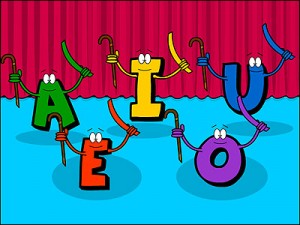 This week, our groups will focus more intentionally on vowels and their different sounds. Vowels are often the trickiest part of a word. When trying to figure out an unknown word, readers have to be flexible and persistent, trying different sounds until they find the right combination that sounds right, looks right, and makes sense.
This week, our groups will focus more intentionally on vowels and their different sounds. Vowels are often the trickiest part of a word. When trying to figure out an unknown word, readers have to be flexible and persistent, trying different sounds until they find the right combination that sounds right, looks right, and makes sense.
We will practice the short and long sound of each vowel, as well as the schwa sound, that crazy sound that sounds like you just caught a football in your stomach. Although our language is full of exemptions, there is one rule that does work most of the time. Some of you might remember, “when 2 vowels go walking, the first one does the talking.” This does actually hold true for many words. When there are 2 vowels together, the first one usually makes the long sound (says its name) and the second vowel is silent. This rule also works with a “vowel-consonant-e” word; the first vowel is long and the second vowel (e) is silent.
Our groups will practice applying this rule in isolated words and in books. At home, you can help build this understanding by asking your child about vowel sounds and finding words that may or may not follow this rule.
Happy reading!

